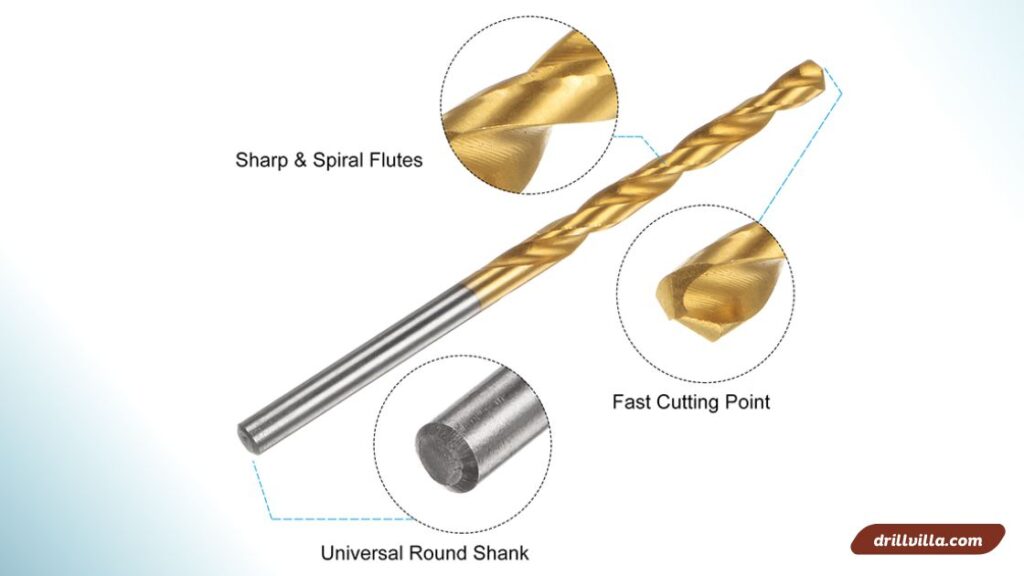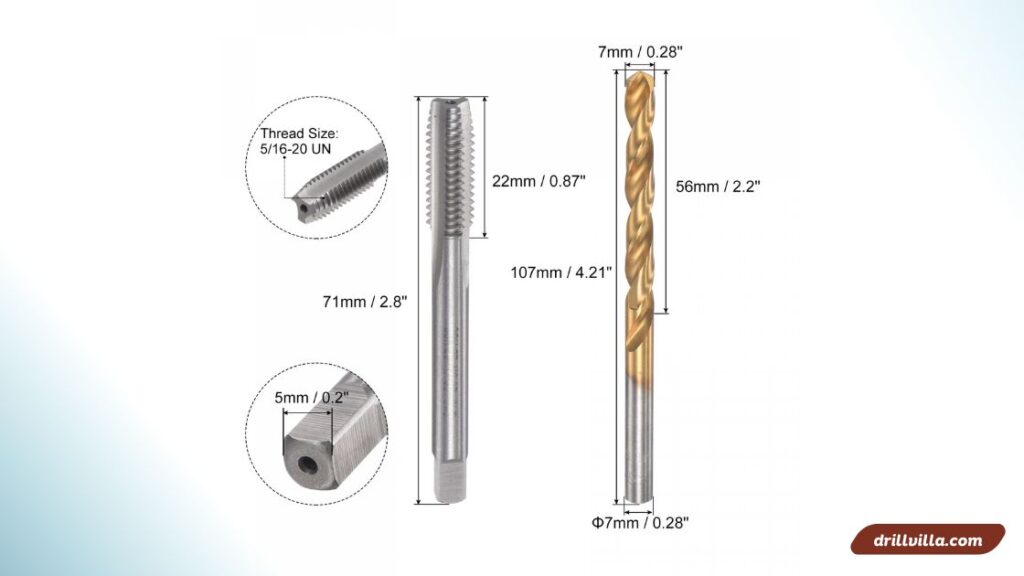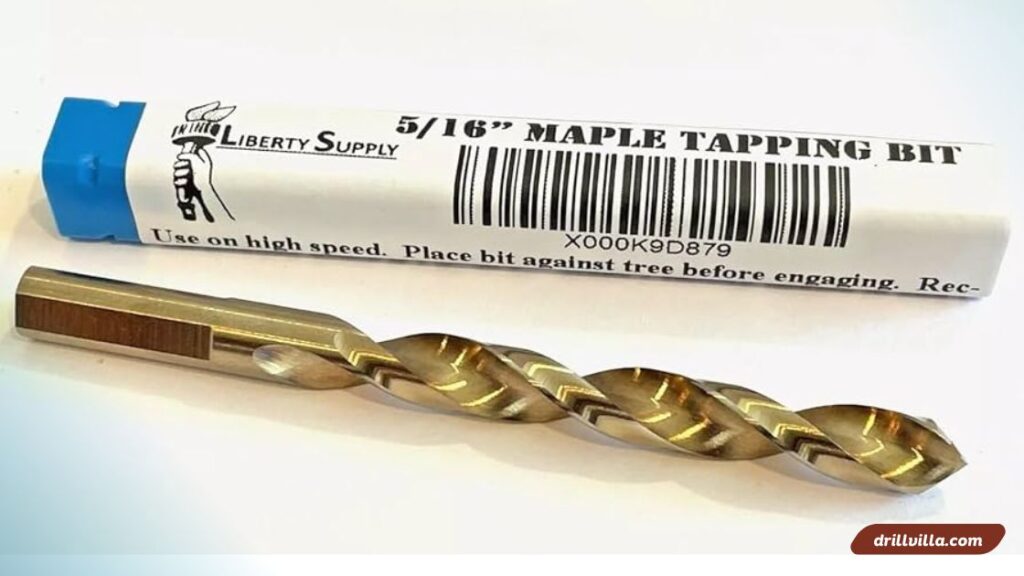Let me tell you, I’ve been there—standing in the middle of my garage, tap in one hand, drill in the other, totally confused. I thought, “What drill bit size do I actually need for this 5/16 tap?” I didn’t want to ruin my project (again), and I sure didn’t want to strip threads or overdrill.
So I rolled up my sleeves, did the digging, tested a bunch of setups, and now I’m here to walk you through everything I learned—no jargon, just real talk and step-by-step advice.
Whether you’re working on metal, plastic, or wood—or you’re just trying to avoid a mid-project meltdown—I’ve got you covered.

Article Summary
- What Drill Bit Size for 5/16 Tap?
- Why It Matters: The Wrong Drill Bit Can Ruin Everything
- Understanding Tap Sizes and Thread Counts
- Coarse vs. Fine Threads: What’s the Difference?
- Materials Matter: Choose Based on What You’re Drilling
- Drill Bit Size Chart for 5/16 Tap (All Options)
- How to Drill for a 5/16 Tap: My Step-by-Step.
- What If I Don’t Have the Right Drill Bit?
- Common Mistakes to Avoid (I’ve Made Them All)
- My Trick for Remembering Drill Sizes
- Where to Buy Drill Bits and Taps (I Use These)
- Tapping Into Different Materials
- Tools You’ll Want in Your Kit
- FAQs: What Drill Bit Size for 5/16 Tap?
- Final Thoughts: The Right Bit Makes All the Difference
What Drill Bit Size for 5/16 Tap?
To drill for a 5/16″ tap, you need to know the thread count (TPI – threads per inch). There are two common types for 5/16 taps: If you’re in a rush, here’s the short and sweet version:
| Tap Size | Threads Per Inch (TPI) | Material Type | Drill Bit Size | Decimal (inches) |
|---|---|---|---|---|
| 5/16″-18 UNC | Coarse Thread | General Purpose | F Drill Bit | 0.2570 |
| 5/16″-24 UNF | Fine Thread | Precision Work | I Drill Bit | 0.2720 |

Why It Matters: The Wrong Drill Bit Can Ruin Everything
You might be tempted to grab whatever bit is lying around. I’ve done it too. But using the wrong size can strip your threads, crack your material, or even break your tap. Here’s what I learned:
- Too Small? You’ll put too much force on the tap. Snap city.
- Too Big? Your threads will be too shallow. No grip = loose screws.
- Just Right? Smooth tapping, clean threads, and a job well done.
It’s like Goldilocks, but with metal.
Understanding Tap Sizes and Thread Counts
When someone says “5/16 tap,” what they really mean is 5/16″-18 UNC or 5/16″-24 UNF.
Let’s break that down:
- 5/16” is the major diameter of the thread (the outermost part).
- 18 or 24 TPI means threads per inch—coarse (18) or fine (24).
I remember standing at the hardware store, looking at the boxes and thinking, “Why are there so many options?” But once you get this part, it all clicks.
Coarse vs. Fine Threads: What’s the Difference?
When I first learned about threads, it felt like splitting hairs. But here’s a quick cheat sheet that helped me:
| Thread Type | Threads per Inch (TPI) | Drill Bit Size | Best For |
|---|---|---|---|
| Coarse (UNC) | 18 | F (0.257″) | General repair, construction |
| Fine (UNF) | 24 | I (0.272″) | Precision work, automotive |
Think of coarse as the workhorse—strong and durable. Fine threads are like a Swiss watch—precise but a little more delicate.
Materials Matter: Choose Based on What You’re Drilling
Different materials respond differently to taps and drill bits. Here’s how I break it down:
Metal
For most metals, I use:
- 5/16-18 UNC tap with F drill bit (0.257″)
- Cutting oil for lubrication
- Slow drill speed to keep the heat down
Pro Tip: Aluminum is softer, so take your time. Steel is tougher—use a sharper bit and maybe a pilot hole first.
Plastic
Plastic can crack easily. I usually go with:
- A sharp drill bit
- Light pressure
- Use the same sizes, but go slower
Personal Tip: I once rushed through ABS plastic and shattered the whole piece. Lesson learned—slow and steady wins the tap.
Wood
Wood is forgiving but can swell:
- Use the same F or I drill bit depending on your thread
- Avoid over-tightening the tap
- Don’t skip pilot holes in hardwoods
Drill Bit Size Chart for 5/16 Tap (All Options)
Sometimes I just want a good ol’ reference table, so here’s a go-to chart you can bookmark:
| Tap Size | TPI | Thread Type | Drill Bit Size | Decimal Size | Common Use |
|---|---|---|---|---|---|
| 5/16″-18 | 18 | Coarse (UNC) | F | 0.2570″ | General purpose |
| 5/16″-24 | 24 | Fine (UNF) | I | 0.2720″ | Precision, auto |
| 5/16″-12 | 12 | Extra Coarse | Letter “R” | 0.3390″ | Specialized |
How to Drill for a 5/16 Tap: My Step-by-Step.
Drilling for a 5/16 tap is simple when you take it step by step. First, you need to know the thread type—either coarse (5/16-18) or fine (5/16-24). For coarse threads, I use an F drill bit, and for fine threads, I go with an I drill bit.
Once I’ve picked the right bit, I mark the drilling spot and drill straight through using steady pressure. I always add a little cutting oil to keep things cool and clean.
After that, I tap the hole slowly, turning the tap in and backing it out often to remove metal shavings. With a little care and patience, I always get clean, strong threads that work just right.

Here’s exactly how I prep for a 5/16 tap hole:
Step 1: Measure Twice
- Confirm whether you’re using 18 or 24 TPI
- Double-check your material type
Step 2: Mark the Hole
- Use a center punch to mark your drill spot
- Keeps your bit from wandering
Step 3: Drill the Hole
- Use a F drill bit for 5/16-18
- Use I drill bit for 5/16-24
- Drill straight and slow
Step 4: Tap the Hole
- Apply tapping fluid or cutting oil
- Turn slowly, back off every full turn
- Clean the hole when done
What If I Don’t Have the Right Drill Bit?
Been there, done that. Here’s what you can do:
- Closest Metric Equivalent
If you’re missing a letter drill bit, here’s a workaround:
| Letter Bit | Metric Substitute |
|---|---|
| F (0.257″) | 6.5mm |
| I (0.272″) | 6.9mm |
Heads Up: Metric subs aren’t always perfect, but they work in a pinch. Just go slow and check the fit before tapping.
Common Mistakes to Avoid (I’ve Made Them All)
I messed up a few early projects before I figured these out:
- Using a dull drill bit – Causes slipping and burns
- Skipping the center punch – Leads to off-center holes
- Tapping without oil – Breaks taps fast
- Wrong drill size – Shallow threads = weak grip
My Trick for Remembering Drill Sizes
I keep a sticky note above my workbench:
5/16-18 = F
5/16-24 = I
It’s simple, but it saves me time every time I forget.
Where to Buy Drill Bits and Taps (I Use These)
If you’re building your DIY toolbox, here are some links I personally use:
- Letter Drill Bit Set on Amazon
- Tap and Die Set – GearWrench or Irwin
I like letter bits because they’re precise, and I never have to guess with fractional or decimal conversions.
Tapping Into Different Materials
Here’s how different materials respond:
| Material | Best Tap Drill Bit | Notes |
|---|---|---|
| Aluminum | F (for 18 TPI) | Use lube, go slow |
| Steel | F (for 18 TPI) | Needs pilot hole in thick steel |
| Brass | F | Easy to tap, careful not to over-torque |
| ABS Plastic | F or I | Light pressure, avoid heat buildup |
| Oak/Wood | F | Tap gently, no back-torque needed |
Tools You’ll Want in Your Kit
If you’re doing this more than once, invest in:
- Letter drill bit set (A-Z)
- Tap and die set (SAE & metric)
- Tap handle with ratchet
- Tapping fluid or light oil
- Center punch and hammer
These tools saved me from a ton of mistakes—and trips to the hardware store.
FAQs: What Drill Bit Size for 5/16 Tap?
Can I use a regular 1/4″ drill bit for a 5/16 tap?
Nope. 1/4″ is too small—you’ll risk breaking the tap or damaging threads.
Is it okay to use a 6.5mm metric bit instead of an F?
Yes, in most cases. 6.5mm is about 0.2559″, close enough for light-duty use.
What’s better: coarse or fine threads?
Depends. Coarse threads (18 TPI) are stronger and better for most repairs. Fine threads (24 TPI) are great for tight spaces or thin materials.
What if I tap a hole and the threads strip?
You can retap to a slightly larger size (like 3/8″) or use a thread insert like a Helicoil.
Final Thoughts: The Right Bit Makes All the Difference
After years of working on projects—cars, furniture, even some home repairs—I can tell you that using the right drill bit for a 5/16 tap is one of those small things that makes a huge difference.
- Clean threads
- Smooth tapping
- No stripped holes
Just remember: 5/16-18 = F, 5/16-24 = I. That one trick alone has saved me hours.
So next time you’re wondering “what drill bit size for 5/16 tap?”—you’ll know exactly what to do. And if you forget, come back here. I’ve got your back.